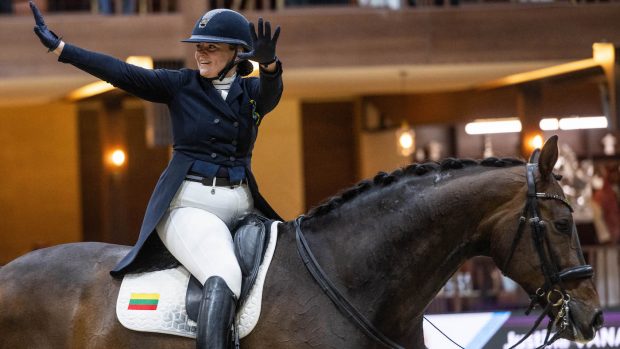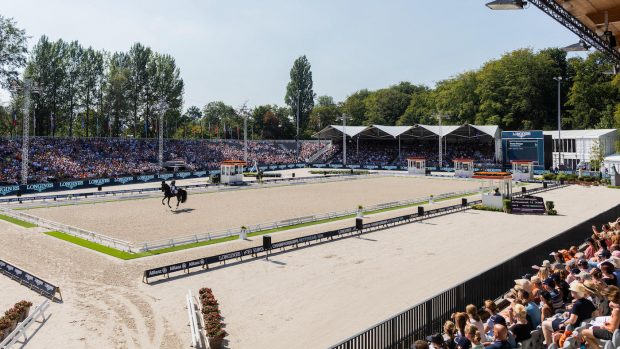Qualities of a good performance
Whatever movement is being attempted, riders should keep the following basic goals uppermost in their minds.
Rhythm: Correct rhythm for the pace (eg, trot: two-time) and a constant tempo (horse does not speed up or slow down).
Suppleness: The horse ‘lets go’, bends easily to the left and right, swings through his back and is not stiff or resistant.
Contact: The horse maintains a light, elastic contact through the reins as a result of being ridden forward rather than pulled back.
Impulsion: Power is built up and stored in the hindquarters, tactfully contained by that light rein contact.
Straightness: The horse should be straight along straight lines and bend to the curve of turns and circles.
Collection: Collection is the ability to shorten the steps because the hindlegs step under to carry more weight. This should happen in all downward transitions.
Riding preliminary tests
Most horses will work in circles and straight lines at the walk, trot and canter and that is all there is to a preliminary test. Even the transitions can be progressive.
When riding a 20m circle in working trot, the horse must maintain a clear, regular rhythm, the suppleness to bend his whole body along the line of the circle, work forward to a consistent elastic contact and engage his hindquarters enough to complete the turns easily.
Rhythm and ease of the movements is very important at this level. If a horse remains in a constant tempo, he likely to be in balance and relaxed enough to be reasonably supple.
Click here to find out more about getting started in affiliated dressage competitions, or visit the British Dressage website.



